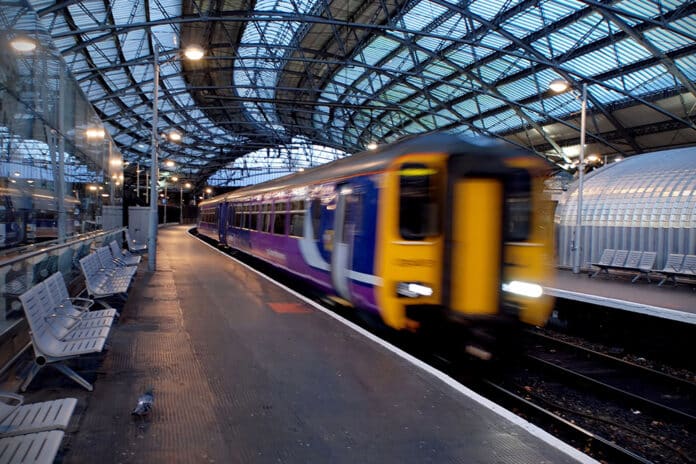Jon Bishop who leads Arcadis’ Stations Hub, a virtual team of professionals who are passionate about stations, discusses technologies we can expect to become common place in stations of the future and how customers and station operators may use them.
Imaging and recognition technology
Facial recognition and tracking is a sensitive topic requiring resolution of complex legal issues before being used to its full potential but the use of face biometrics is already commonplace at airports where passport control matches a live image of your face to your passport. This technology is being tested at Osaka and Beijing railway stations as part of a ticketless, hence contactless, travel initiative. It has even been trialled at Waterloo Station to detect mask wearing at the gate-line.
Capturing and recognising micro-expressions that can give away a person’s intent, emotional state, or even need for food is an off-shoot of facial recognition. This requires high-definition, high-speed cameras coupled with machine vision algorithms that learn to recognise hidden facial expressions. This developing technology could be used to inform interactive advertising and signage, identify potential security threats and even detect potential suicide attempts enabling station staff to intervene.
Image recognition can also recognise left luggage, bags or suspicious packages where algorithms detect and monitor items and automatically alerts security to their presence. Person identification can be used in conjunction with BIM and asset management tools to track passenger flows through a station, identifying when crowding begins to build up. This prompts a security response or automatically activates additional ticket barriers, ticket machines and escalators. This technology also links to asset management whereby assets during off-peaks periods can be powered down, saving energy, reducing component wear and extending asset life.
Asset Management
Image recognition is being used on the railways through our work with PRORail NV where rail faults, damage and unexpected items such as abandoned tools, garbage and vegetation can be detected and reported automatically. Within a station environment this technology can be used for monitoring structural condition, bird and animal nesting and damage and thermal performance of assets such as substations and trains. Having captured existing asset data we can use this information to plan for maintenance and asset life extension using Enterprise Asset Management techniques. These allow us to develop bespoke asset management programmes which are time profiled and based on available budgets or predict required budget, as well as driving energy savings.
Connectivity & 5G
5G is often used as a ‘catch-all’ for any new form of communications. It is a vast topic area that Arcadis can help clients navigate and plan for.
Stations are typical ‘high footfall – high demand’ locations for mobile operators. 5G will be no exception. All transport hubs are pain-points for mobile operators; bursts of demand as trains arrive and the usual ‘peaky’ rhythms of a working day combined with waiting passengers using their devices for work or pleasure.
Station operators should focus on allowing patrons to connect to the services they love using existing devices with minimal interference. This is often about making sure mobile operators can deliver capacity and coverage inside the station rather than the temptation to create new revenue streams. With the potential shift towards working from home, stations will need to think of other ways to attract customers. Provision of high quality, stable, internet connectivity along with attractive hot desk workstations would be one way to drive footfall, increase dwell time and spending.
Sustainable solutions
The seemingly least technologically advanced solution to cooling stations is through natural ventilation, ie providing openings for heat to dissipate through. The clever bit is modelling the building and its many variables to ensure heat disperses optimally. With the drive to Net Zero, natural ventilation is a key weapon in our carbon reduction arsenal.
Power generation at stations and other railway buildings is increasingly commonplace with Solar PVs installed to many station roofs including Blackfriars and future HS2 stations. Zurich-Seebach station generates traction power through roof mounted PV panels alone. The Netherlands is leading the way by achieving its target of running railways from 100% wind and solar generated electricity in 2015. Much more can be done to achieve Net Zero carbon in the UK ahead of current target dates.
Kinetic power generation can be used in many ways to capture energy from moving bodies such as people and trains and converting it into electricity for use or storage. Kinetic tiles installed in areas of high footfall such as at station entrances, ticket barriers and along platforms convert people movement into electricity. Using linear generators and linear motors on tracks in stations, the kinetic energy of trains entering platforms is captured, stored and used to propel the train out of the station. Effective energy storage without the use of large batteries is key. Compact flywheel energy storage devices solve this problem storing energy kinetically short-term and converting it to electricity when required.
– Arcadis recently announced it had joined forces with Linxon and SSE Contracting, to power up a greener and more effective railway, delivering the HV solution as one.
Photo credit: Getty Images



































 0113 2082620
0113 2082620 info@railbusinessdaily.com
info@railbusinessdaily.com 15 Mariner Court, Wakefield WF4 3FL
15 Mariner Court, Wakefield WF4 3FL

